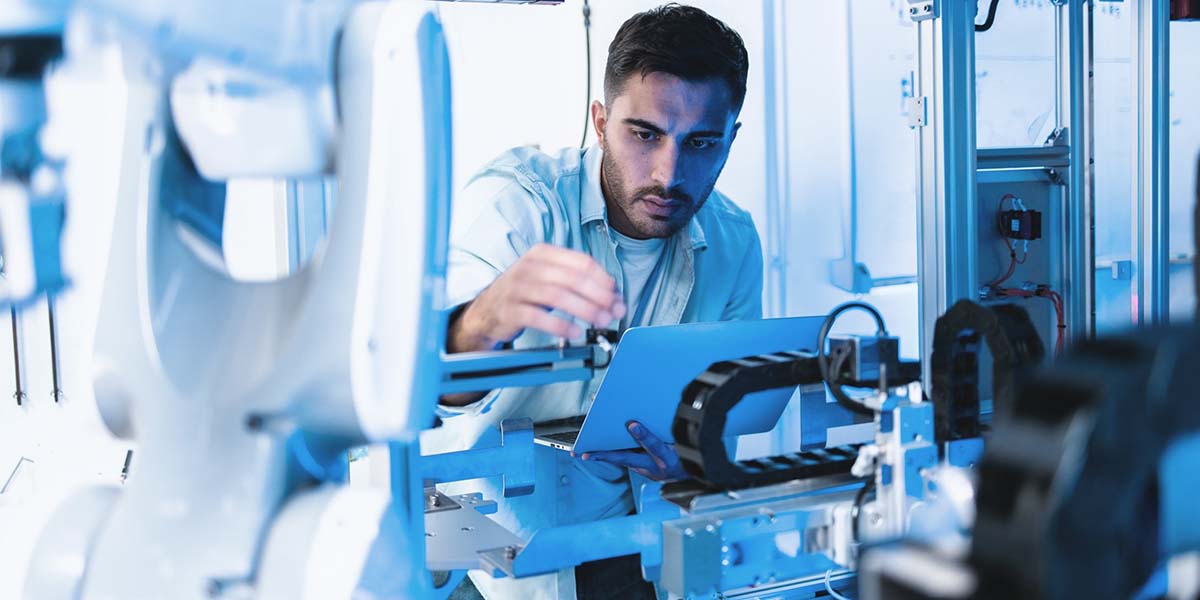
| Our best ideas, quick and curated | FEBRUARY 25, 2022
|
| This week, we take a look at how the global wellness industry is responding to fast-changing consumer habits. Plus, the state of grocery retail in India, and how growing concern about climate change is affecting car buying in Asia. |
|
|
|
| Healthy, wealthy, and wise. The $1.5 trillion wellness market is growing, thanks to consumers who are increasingly prioritizing their health and well-being. The acceleration of e-commerce during the COVID-19 pandemic, the widespread appeal of mobile fitness apps and trackers, and consumers’ growing willingness to share personal information with brands are all converging to make wellness more connected and customized than ever. |
| We want wellness. People all over the world are increasingly aware of the importance of physical and mental health. According to a McKinsey survey of about 7,500 consumers, nearly 80 percent of respondents in Brazil, China, Germany, Japan, the UK, and the US think that wellness is important. In fact, consumers in every market we studied said that wellness has become a much bigger priority in the past two to three years. |
| Make it personal. McKinsey consumer research also indicates a huge shift toward personalization in the wellness industry. In health, fitness, nutrition, appearance, sleep, and mindfulness, consumers—particularly in Brazil and China—are increasingly willing to engage with companies online and share personal data in exchange for more customized service, recommendations, and treatments. |
| Blurred categories. Along those lines, wearables and fitness trackers are enabling fitness regimens to become better customized—for instance, through tracking a user’s exercise and sleep and providing personalized advice. These devices often cross into multiple product categories. Even so, a majority of consumers say that they don’t want a single solution or company to help them with every facet of wellness. This suggests that a more effective approach for companies may be to extend their brands in a targeted way—perhaps through M&A. |
| No couch potatoes here. Lockdowns, stay-at-home orders, and social distancing forced even the most dedicated gym-goers to change their routines. Still, consumers found new ways to work out, including exercising at home, using connected fitness gear, and joining outdoor fitness classes. In fact, about 10 percent of the US population set up home gyms or accessed online fitness resources during the COVID-19 pandemic. |
| On demand exercise. We spoke to a coach at one fitness studio that developed an online exercise platform early on in the COVID-19 pandemic. Shaun Robert Jenkins, senior training manager and head coach of a fast-growing NYC fitness studio, described two important pivots the company made during the COVID-19 crisis. “[We went] from our indoor studio to the outdoors, so that we could continue offering in-person fitness sessions in a physical space,” Jenkins said. “We also began to offer workouts in the digital space through our on-demand platform.” The online platform enabled the studio to deliver “a constant stream of content” to their members. |
An app a day. Speaking of exercise on demand, we end on something you likely have in your smartphone: a mobile-fitness app. Investors poured a record-breaking $2 billion into developing fitness-tech apps in 2020. Our research shows that more than a third of global consumers will likely spend more on nutrition apps, diet programs, juice cleanses, and subscription food services over the next year. As we enter a third year of the pandemic, thank goodness that there are myriad ways to get healthier, too. |
|
|

|
|
|
| PODCAST |
| The Fourth Industrial Revolution depends on people |
| Workers often fear that digitization and automation represent a threat to their livelihoods. But although some jobs will likely be displaced by new technologies, companies at the cutting edge of technology are actually creating many more new roles. In this edition of the McKinsey Talks Operations podcast, the WEF’s Francisco Betti leads a conversation on the use of digital technologies in manufacturing and the training workers need to enter the high-tech future. “When you learn new skills, when you educate yourself, you have the opportunity to live a better life,” says David Goeckeler, CEO of Western Digital and a panelist at the WEF event, Lighthouses Live. “It’s not just about our company being better and us being prepared for the future; it’s about all of our employees being ready for that future.” |
|
|
|
|
|
|
| Why is this the time to read about synthetic biology? |
| The first reason has to do with investment. SARS-CoV-2, which is the virus that causes COVID-19, acted as a catalyst for genetic sequencing—for synthesis. It broke us free of our existing mental models for what a virus was and how it spread, for pathogen detection, and new ways to inoculate people. That attracted significant investment. There’s a flood of capital being directed at synthetic biology, which means that in the next 24 to 36 months, we’re going to start to see this ecosystem really develop. |
| The second reason has to do with risks. In the future, the most worrying data security breaches could actually involve our DNA. In this biological era that we’re entering, it could be a major information security problem. There are easy ways to scrape somebody’s genetic code. That could have widespread implications if that person is a politician or is the CEO of a big company. |
| The third reason actually has to do with solutions. It’s hard to get people to change. We just saw at COP26, the big climate-change conference, that world leaders are just not going to act fast enough to mitigate the climate crisis, especially when what we’re asking countries to do is to stop contributing to their economy by scaling back some of their manufacturing or having to change it. We’re going to have to develop alternatives. |
| Why should CEOs and businesses care now about synthetic biology? |
| Synthetic biology is a new term to just about everybody. At some point, artificial intelligence was also a new term. We talk about AI today, but most of what we’re talking about has to do with other things, like the impact of automation. AI is here; it’s invisible; most of our daily activities require it; it’s fundamental. We’re going to be in the same place ten or 15 years from now with synthetic biology. |
| The biggest and most durable inventions of the 21st century are going to be at the nexus of biology and technology. For that reason, I cannot think of an industry that synthetic biology will not have some impact on over the next decade. Pharmaceuticals, industrial materials, auto manufacturers, banks, everybody in some way will play a role in what’s coming. |
| Can synthetic biology’s benefits be both accessible and inclusive globally? |
| The genetic databases don’t tend to include people of color. Historically, our governments have done awful things to people of color in the name of experimentation. We’re going to have to figure out ways to engender trust because this technology gives us optionality. It also gives us other ways to think through the problems that we keep trying to attack with similar solutions that aren’t making any real change. |
| What gives me hope is that between human ingenuity and the science and technology that we have access to, we can right some of our wrongs, and we can create better futures. But we can’t approach that with outright fear or a complete utopian ideal. We have to take a pragmatic approach. If we can do that, then we live longer, better, healthier, happier lives. It’s going to be hard work, though. |
| — Edited by Belinda Yu |
|
|
|
| BACKTALK |
| Have feedback or other ideas? We’d love to hear from you. |
|
 |
|
|
Did you enjoy this newsletter? Forward it to colleagues and friends so they can subscribe too.
Was this issue forwarded to you? Sign up for it and sample our 40+ other free email subscriptions here.
|
|
|
This email contains information about McKinsey’s research, insights, services, or events. By opening our emails or clicking on links, you agree to our use of cookies and web tracking technology. For more information on how we use and protect your information, please review our privacy policy.
|
|
You received this email because you subscribed to The Shortlist newsletter.
|
|
|
|
Copyright © 2022 | McKinsey & Company, 3 World Trade Center, 175 Greenwich Street, New York, NY 10007
|
|
|
|






